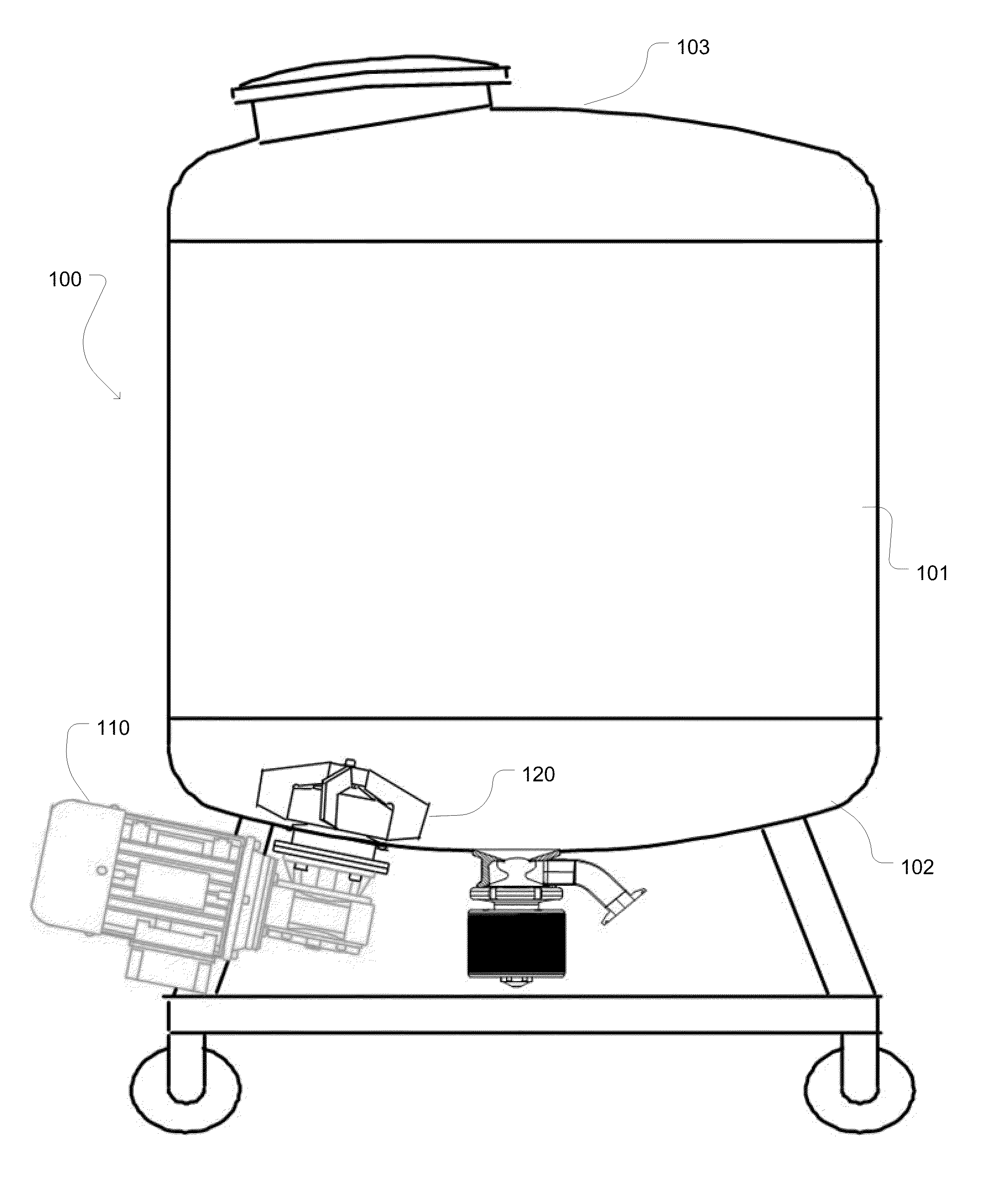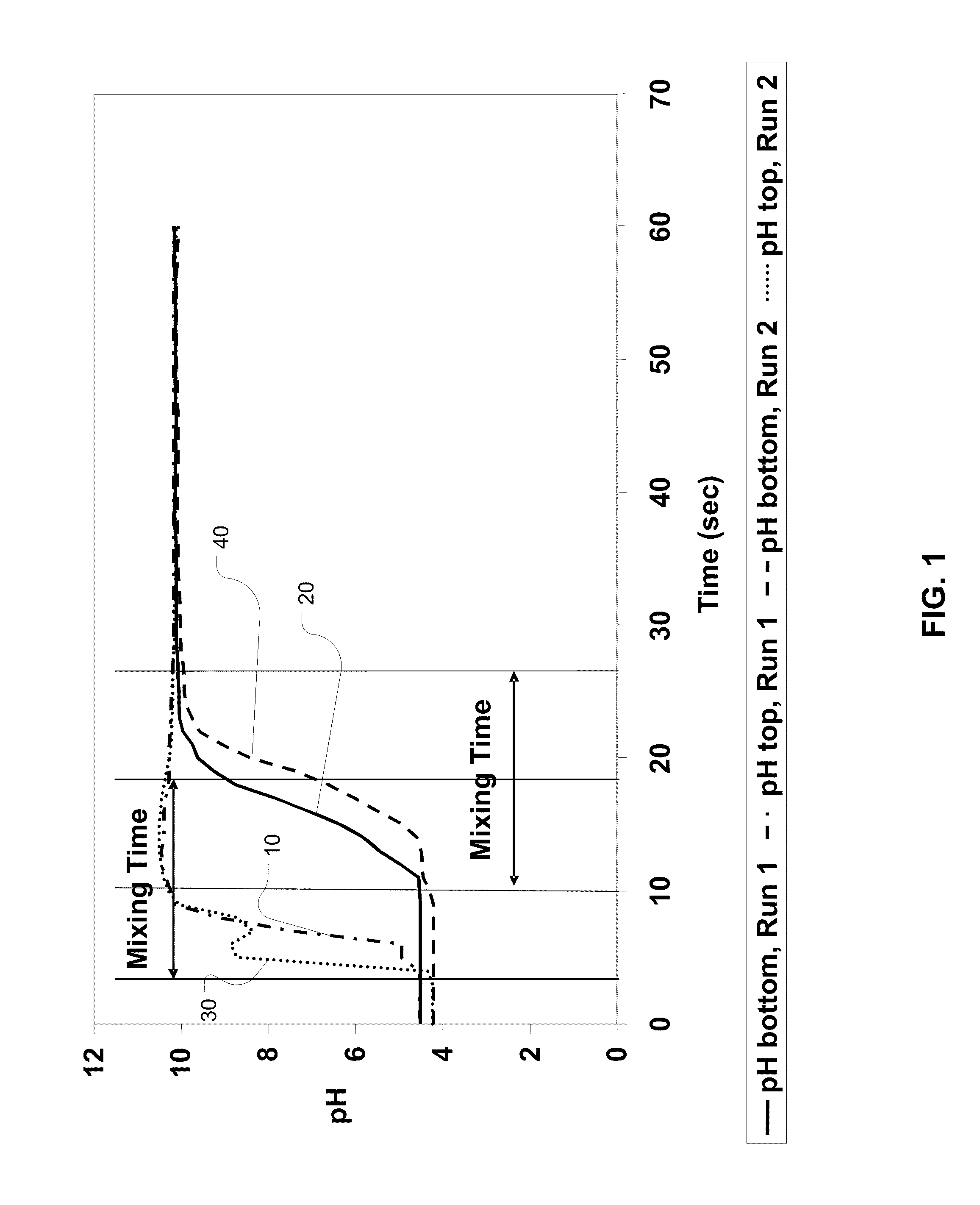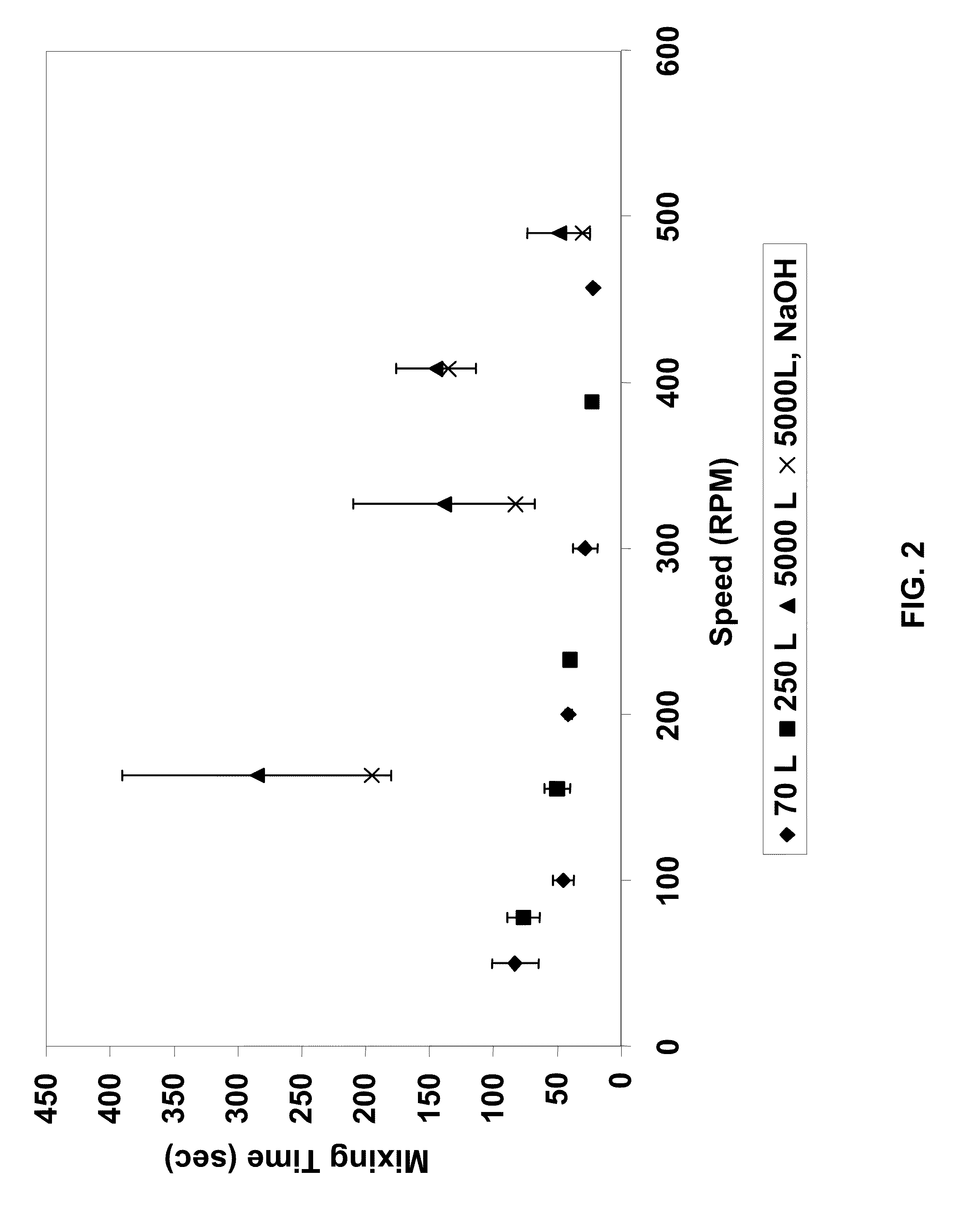Method for scaling mixing operations
a mixing operation and scaling technology, applied in the field of scaling mixing operations, can solve the problems of affecting the homogeneity of the solution, the parameters of mixing time for a small vessel cannot be easily scaled to accommodate a large vessel, and the process originally used to create the smaller batches may not always be suitable for longer containers
- Summary
- Abstract
- Description
- Claims
- Application Information
AI Technical Summary
Problems solved by technology
Method used
Image
Examples
embodiment 300
[0075]The first was the GMP Series, an embodiment 300 of which is shown in FIG. 13, the data for which has been presented above, and is shown as line 250 in FIG. 12. The GMP Series impeller (mixing head) 300 has outwardly protruding blades 310, spaced roughly ¼ turn from one another. The mixer drive unit or motor 320 is affixed to the impeller by means of a shaft or magnetic coupling. When the motor rotates, it causes the blades of the impeller 320 to also rotate.
[0076]FIG. 12 shows a log-log graph of dissolution time versus MP. Based on equation (4), the results for each impeller design should result in a straight line, where the slope is β and the y-intercept is the logarithm of α.
[0077]The GMP test data was used to create line 250. This test data created a best fit line having a confidence level (R2) of 0.9059, with a β almost exactly that shown above.
embodiment 400
[0078]The second impeller design was a USM mixer (also known as an upstream mixer), an embodiment 400 of which is shown in FIG. 14. In this embodiment, five blades 410 are equally spaced. These blades are smaller in size than those used in GMP series impeller 300 and have different, identifiable fluid flow characteristics. These flow characteristics allow the USM mixer to be characterized (as the GMP mixer is) in terms of predictable performance. In addition, a mixer 420 is used to drive the impeller 400.
[0079]In this test, a single impeller diameter was used, while the RPM was varied. The vessel used was not changed. The five test points appear below:
TABLE 1Test configurations for USM mixerImpellerVesselVessel Workingdia (mm)dia (mm)Volume (L)RPM10412006106651041200610900104120061013881041200610114010412006101630
[0080]The data was graphed as line 260 on FIG. 12. As expected, the logarithm of the dissolution times varied linearly with the log of the MP mixing parameter, as shown in ...
embodiment 500
[0081]The third impeller design was a HS mixer (also known as a high sheer mixer), an embodiment 500 of which is shown in FIG. 14. In this embodiment, the individual blades 410 are spaced close together and the impeller is positioned with respect to the stator to maximize sheer. In addition, a mixer 420 is used to drive the impeller 400. In this test, the impeller diameter was varied, as was the diameter and volume of the vessel. The test points appear below:
TABLE 2Test configurations for HS mixerImpellerVesselVessel Workingdia (mm)dia (mm)Volume (L)RPM41394751500413947518004139475319041394755100657906101000657906102200657906103500
[0082]The data is plotted as line 270 on FIG. 12. Again, even with different impeller diameters, different RPMs and different vessel diameters and volumes, a straight-line approximation is still accurate, having a confidence level confidence (R2) of nearly 0.9.
[0083]Thus, the data shows that, for a particular impeller design, the dissolution time of a mixt...
PUM
 Login to View More
Login to View More Abstract
Description
Claims
Application Information
 Login to View More
Login to View More - R&D
- Intellectual Property
- Life Sciences
- Materials
- Tech Scout
- Unparalleled Data Quality
- Higher Quality Content
- 60% Fewer Hallucinations
Browse by: Latest US Patents, China's latest patents, Technical Efficacy Thesaurus, Application Domain, Technology Topic, Popular Technical Reports.
© 2025 PatSnap. All rights reserved.Legal|Privacy policy|Modern Slavery Act Transparency Statement|Sitemap|About US| Contact US: help@patsnap.com



